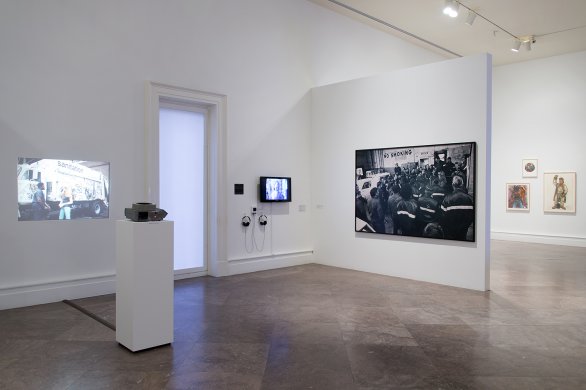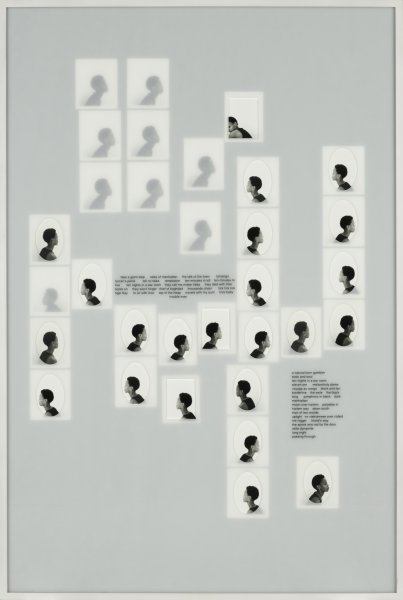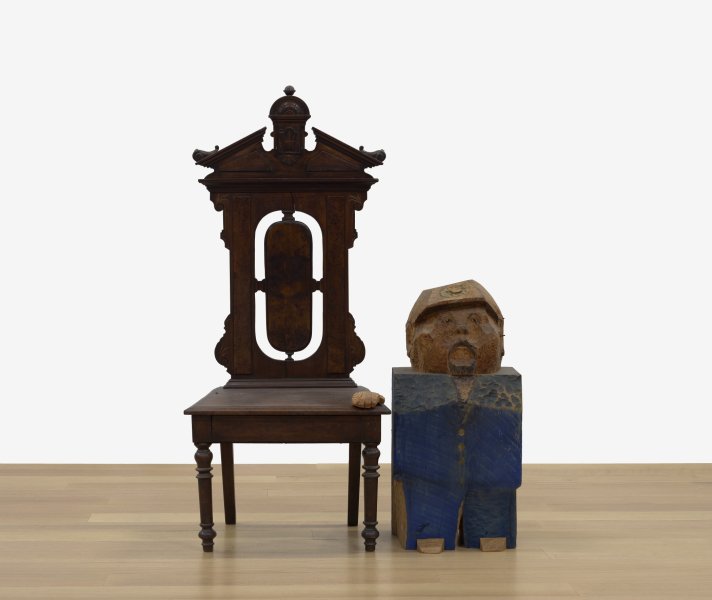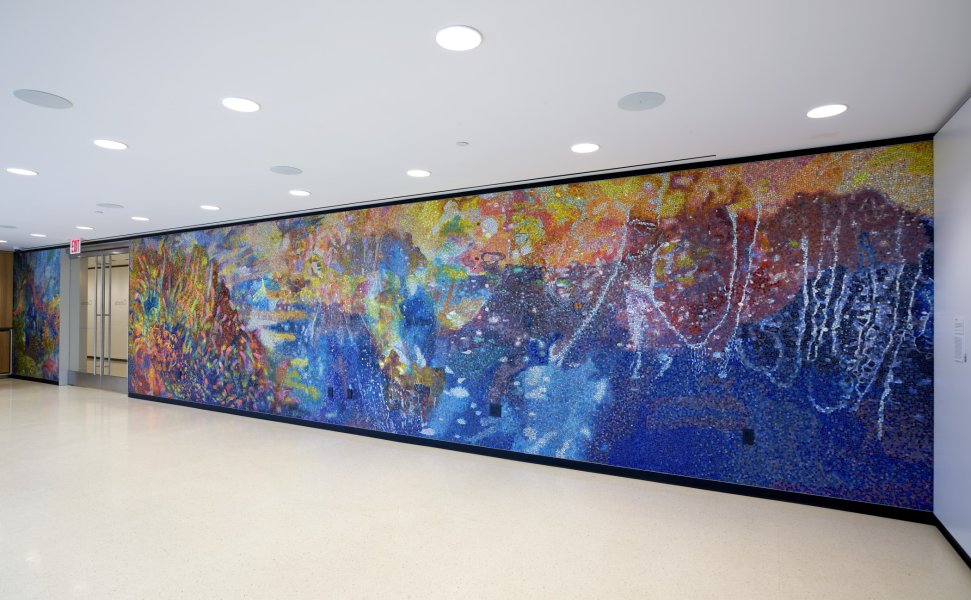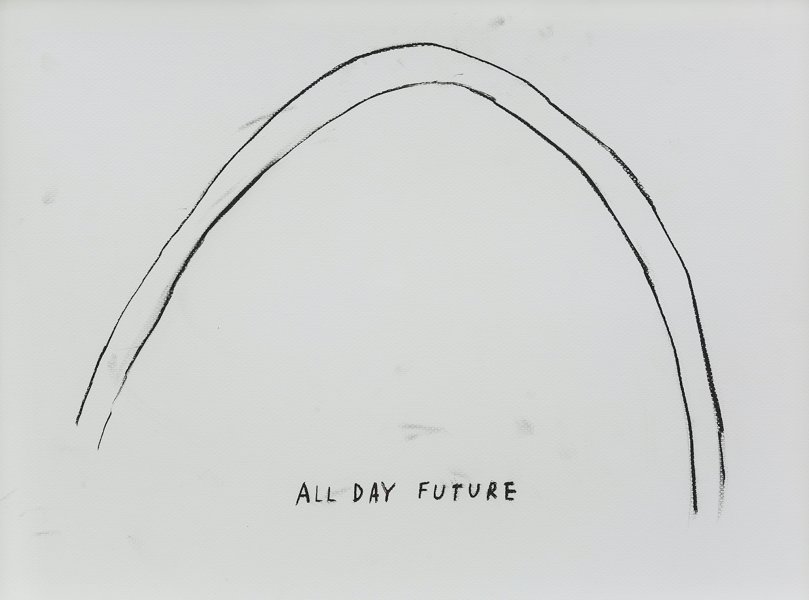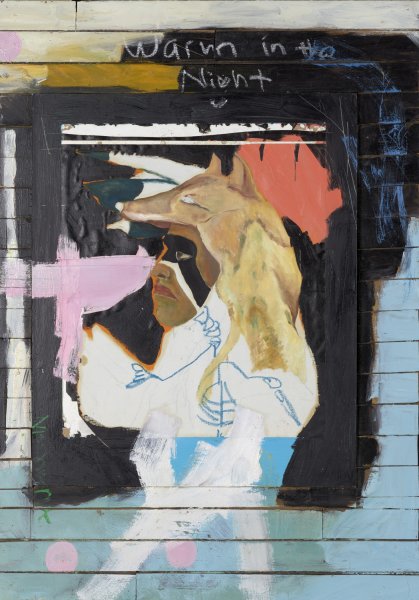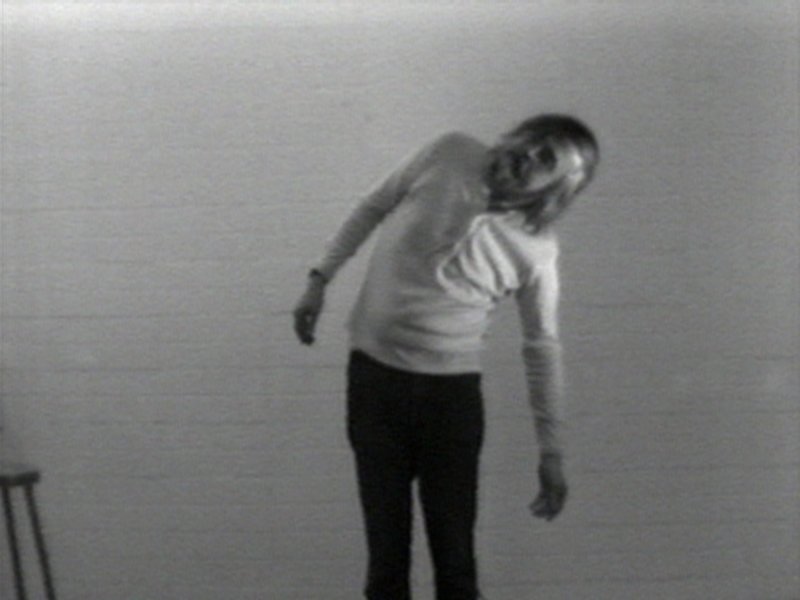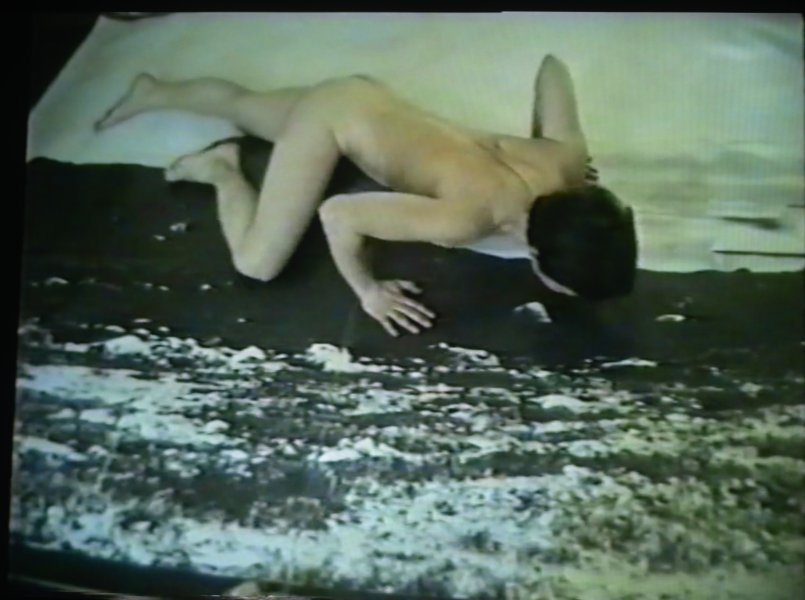Lorna Simpson
American, born 1960
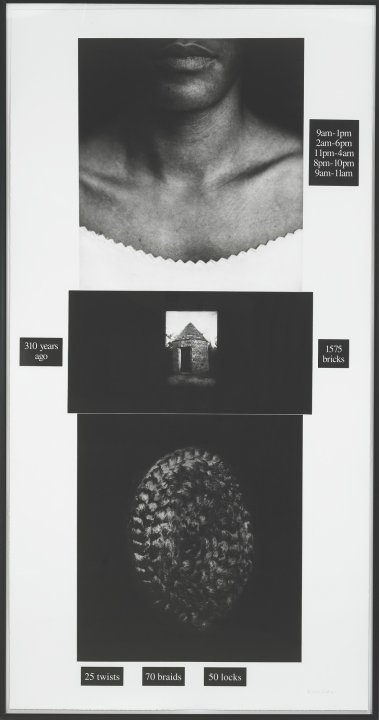
Lorna Simpson (American, born 1960). Counting, 1991. Photogravure with silkscreen, edition 8/60, 73 3/4 x 38 inches (187.3 x 96.5 cm). Collection Albright-Knox Art Gallery, Buffalo, New York; The Gerald S. Elliott Fund, 1992 (P1992:3). © Lorna Simpson, courtesy Salon 94, New York.
Counting, 1991
Artwork Details
Currently on View
Materials
photogravure with silkscreen
Edition:
8/60
Measurements
overall: 73 3/4 x 38 inches (187.33 x 96.52 cm)
Collection Buffalo AKG Art Museum
Credit
The Gerald S. Elliott Fund, 1992
Accession ID
P1992:3
Lorna Simpson believes that art, especially photography, has the potential to change the world for the better. But the issues she addresses, such as the African American social experience, are not easy ones and leave her work open to a variety of interpretations. The juxtaposition of image and text in Counting seems to allude to different kinds of work and the passage of time in such labors. The top image in Counting is an anonymous woman wearing a plain white garment. The times to the right may indicate work shifts, but the schedules are impossibly demanding. The central image presents a smokehouse in South Carolina that was used as a slave hut. Slavery was first codified in colonial law in what would become the United States around the mid-1600s, which may account for the reference to “310 years ago” on the left of this image, and presumably the “1,575 bricks” mentioned on the right were those used in the construction of the tiny building. The hair in the bottom image visually accords with the number of twists, braids, and locks cited textually below. The form of the hair itself echoes that of the slave quarters above. Simpson said about meaning in her work, “I would hate to think that my work is perceived as a portrayal of victimization. . . . I want to relate the dynamics of a situation, both how that situation occurs and how it affects people’s lives. . . . It’s intentionally left open-ended. There’s not a resolution that just solves everything.”
Label from Overtime: The Art of Work, March 8–May 17, 2015
